invention of the steam engine
description: an advancement that powered the Industrial Revolution, invented in various forms by people like Thomas Newcomen and James Watt.
50 results
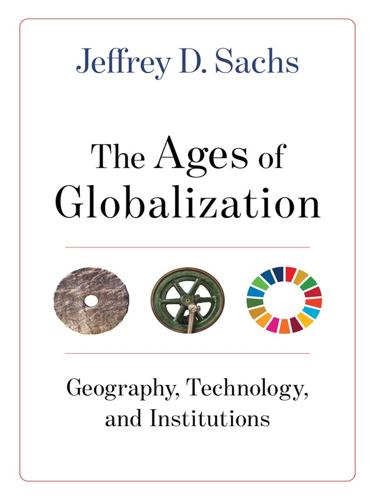
The Ages of Globalization
by
Jeffrey D. Sachs
Published 2 Jun 2020
With the domesticated horse, rapid, long-distance overland transport and communications became possible. The horse served several basic roles: animal traction (horsepower), communications (conveying messages), and military (cavalry). In modern jargon, we would say that the domesticated horse was a “disruptive technology,” somewhat like the invention of the steam engine, locomotive, automobile, and tank combined. In politics, the horse hastened the arrival of the state, by enabling the reach across much greater distances of public administration and coercive force. The next age, known to us as the Classical Age, which I date from 1000 BCE to 1500 CE, marked the rise and intense competition of large land-based empires.
…
Changes that used to take place over the course of centuries or even millennia now occurred over just a few decades. The Industrial Age was marked by remarkable waves of technological advance, and a powerful new alliance of science and technology. With the tapping of fossil fuels, made possible by the invention of the steam engine and the internal combustion engine, industrial production soared. Global populations soared too, as the result of massive increases in food production. While the Ocean Age gave rise to transoceanic empires, the Industrial Age gave rise to the first global hegemon, Great Britain, and later, the United States.
…
Consider the coal-burning steam engine, the most important invention of the Industrial Age. The steam engine offered a brilliant new way to create motive force in factories and transport, leading to industrialization and eventually to a vast increase in productivity and living standards (while displacing and even impoverishing many people in the short term). The invention of the steam engine in eighteenth-century Britain depended on geography—specifically, the presence of coal in England that could be mined and transported at low cost. Its invention and deployment also depended on Britain’s economic institutions. The inventor of the modern steam engine, James Watt, was out to make a profit, and he expected to do so in part because Britain offered legal protection for intellectual ideas and a market to sell the product.
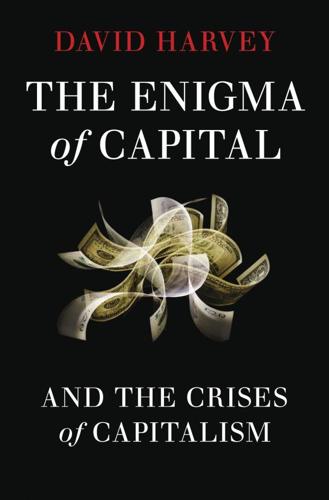
The Enigma of Capital: And the Crises of Capitalism
by
David Harvey
Published 1 Jan 2010
But in terms of the immediate crisis of our time that began in 2006, the question of natural limits cannot, on the surface at least, be accorded primacy of place, with the possible exception of the role of so-called ‘peak oil’ and its impact on energy prices. The issue of peak oil requires, therefore, some commentary. As background it is worth noting that what began to appear as the greatest of all potential natural limits to capitalist development in eighteenth-century Britain was neatly transcended by the turn to fossil fuels and the invention of the steam engine. Before that time the land had to be used for both food and energy production (from biomass) and it became increasingly clear that it could not be used for both at a compound rate of growth given the transport capacities of the time. After 1780 or so, energy could come from underground (in the form of coal reserves laid down in the Carboniferous period) and the land could be used for food production alone.
…
It ultimately proved to be the Achilles heel of actually existing communism. Bureaucratic and power-structure ossification became the problem. For reasons that are much debated and which will probably never be finally settled, between the Catholic Church’s inquisition and repression of Galileo in the early seventeenth century and Watt’s invention of the steam engine in the late eighteenth century, there occurred in Europe, and in Britain in particular, a radical reconfiguration of the social, political, cultural and legal conditions that turned innovation and new ideas into an open sesame for the creation of wealth and power. A ruling class continued to rule, but not necessarily through the same personae or their biological descendants.

The Relentless Revolution: A History of Capitalism
by
Joyce Appleby
Published 22 Dec 2009
The significance of expanded trade routes and partners could not possibly be overstated, but the key point to make about trade in a history of capitalism is that it had existed for centuries before capitalism and would have continued to flourish without it. Because we can see the obvious connections between the sixteenth-century voyages to the Orient and the New World, we’re tempted to connect it seamlessly to the eighteenth-century invention of the steam engine and the emergence of full-blown capitalism as though the one followed the other inexorably, but there is no inevitability in life. Nor do we ever have a very good sense of what the future holds for us. In the middle of the seventeenth century, when new trades were opening up, there was no reason for people to expect that a succession of marvelous machines would alter modes of work that had prevailed for millennia or that a fresh description of human beings and their social nature would soon supplant the traditional wisdom that had long guided people.
…
Its members soon discovered how difficult it was to turn useful “knowledge” into useful practices, but they did initiate a lecture series that took this knowledge to the provinces, where others might actually figure out how to make it useful.29 Of course none of this would have had any impact on the world of work where people sweated near blast furnaces and toiled at weaving looms had not the physical laws they studied affected the actions of lifting, pushing, and rotating. The two important discoveries for the invention of the steam engine, the pivotal innovation of the century, were the existence of a vacuum and the measuring of air pressure. And even this knowledge might have remained locked up in air pumps and bell jars had there not been a diffused conviction, since Newton wrote that nature could be made to work for human beings, that its forces could be understood and controlled.
…
In statements that bring knowing smiles to our lips, lots of experts expressed the fear that the age of invention and expansion had come to an end. Some critics hailed the Depression as a reproof to a materialistic age. It posed, they said, an opportunity to return to the simple way of life that had prevailed before the invention of the steam engine. The severity, universality, and duration of the Great Depression disproved the contention that the economy had its own means for righting itself. The unwillingness of the United States to demonstrate the enlightened self-interest of a leader willing to take a few hits for the benefit of long-term recovery disappointed.

The God Species: Saving the Planet in the Age of Humans
by
Mark Lynas
Published 3 Oct 2011
Our mastery of fire was a product of the adaptability and innovativeness with which evolution had already equipped us long before, and that no other species had heretofore possessed. Humanity’s Great Leap Forward was not about evolution, but adaptation—and could therefore move a thousand times faster. I don’t want to oversimplify: The Stone Age did not end in 1764 with James Watt’s invention of the steam engine. Clearly great leaps in human behavior and organization took place over preceding millennia with the advent of language, trade, agriculture, cities, writing, and the myriad other innovations in production and communications that laid the foundations for humanity’s industrial emergence.
…
This new boundary is the acidification of the world’s oceans, which, as they absorb the carbon dioxide released by human burning of fossil fuels, are gradually turning more hostile to many forms of marine life. Homo sapiens currently releases 10 billion tonnes of carbon per year—a million tonnes every hour. Since James Watt’s invention of the steam engine in 1784, humans have released more than half a trillion tonnes of carbon from geological safe storage underground into the atmosphere.1 Up to 85 percent of this liberated carbon, somewhere between 340 and 420 billion tonnes, has soaked into the oceans.2 This is a stroke of luck for us, because rates of greenhouse warming are sharply reduced as a result: Were the oceans not performing this free service, the Earth’s temperature would be rising at double or triple today’s rate.
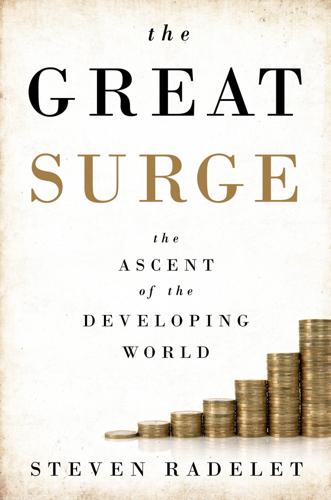
The Great Surge: The Ascent of the Developing World
by
Steven Radelet
Published 10 Nov 2015
Human welfare and average incomes began to improve slowly, in some parts of the world, starting in the twelfth and thirteenth centuries, but progress was incremental and not widespread. That pattern began to change rapidly in the nineteenth century, as the impacts of the industrial revolution took hold, and increasing numbers of people began to escape the ravages of extreme poverty. James Watt’s invention of the steam engine in the 1770s ignited a surge of new innovations and technologies, including the transformation from hand to machine production, the introduction of mechanized cotton spinning (and with it the mass production of textiles), Jethro Tull’s (earlier) development of the horse-drawn seed drill (which helped increase food and agricultural production), the shift in energy sources from wood and charcoal to much cheaper coal, and the large-scale production of chemicals and iron.
…
Part of the importance of the recent global integration of developing countries is that it has taken place exactly when it did: during a period of some of the greatest advances in technology in the last two hundred years. Just as the industrial revolution can be traced to James Watt’s invention of the steam engine, which drove innovations and changes across the economic landscape, much of the current technological revolution can be traced back to the semiconductor and the computer, a history that Erik Brynjolfsson and Andrew McAfee recount in The Second Machine Age: Work, Progress, and Prosperity in a Time of Brilliant Technologies.14 There are multiple examples, but I will focus on technological advances in four areas that have been important to developing countries: transportation, agriculture, information, and health.
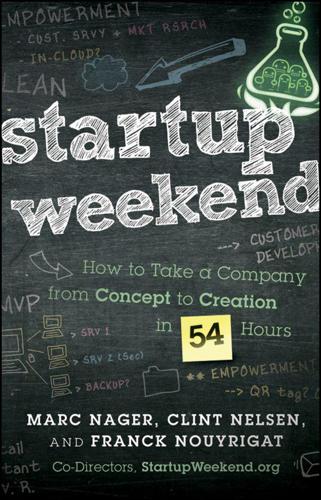
Startup Weekend: How to Take a Company From Concept to Creation in 54 Hours
by
Marc Nager
,
Clint Nelsen
and
Franck Nouyrigat
Published 8 Nov 2011
It will spread to the enterprise, and ultimately, to every other business segment. When It's Darkest, We See the Stars What does it mean that we are at the cusp of a revolution as important as the scientific and industrial ones? Revolutions are not obvious when they are happening. When James Watt launched the Industrial Revolution with the invention of the steam engine in 1775, no one said, “This is the day everything changes.” When Karl Benz drove around Mannheim in 1885, no one said, “There will be 500 million of these driving around in a century.” And certainly in 1958, when Noyce and Kilby invented the integrated circuit, the notion of a quintillion (10 to the 18th power) transistors being produced each year seemed ludicrous.

The Fourth Industrial Revolution
by
Klaus Schwab
Published 11 Jan 2016
These marked the transition from muscle power to mechanical power, evolving to where today, with the fourth industrial revolution, enhanced cognitive power is augmenting human production. The first industrial revolution spanned from about 1760 to around 1840. Triggered by the construction of railroads and the invention of the steam engine, it ushered in mechanical production. The second industrial revolution, which started in the late 19th century and into the early 20th century, made mass production possible, fostered by the advent of electricity and the assembly line. The third industrial revolution began in the 1960s.
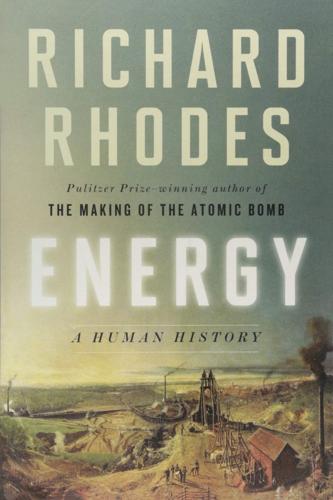
Energy: A Human History
by
Richard Rhodes
Published 28 May 2018
Galbraith, John Kenneth. American Capitalism: The Concept of Countervailing Power. Boston: Houghton Mifflin, 1952. Gallopin, Gilberto C. “Branching Futures and Energy Projections.” Renewable Energy for Development 10, no. 3 (1997) (online). Galloway, Robert L. Annals of Coal Mining and the Coal Trade: The Invention of the Steam Engine and the Origin of the Railway. London: Colliery Guardian, 1898. ———. A History of Coal Mining in Great Britain. London: Macmillan, 1882. Galvani, Luigi. Commentary on the Effect of Electricity on Muscular Motion (De Viribus Electricitatis in Motu Musculari Commentarius). Translated by Robert Montraville Green.
…
Of coal borings, communicated by Dr. Martin Lister, Fell. Coll. Phys. & R. S. which role or record he had from Mr. Maleverer, of Arncliffe in Yorkshire. Philosophical Transactions of the Royal Society of London 21(1699): 73–78. 4. Robert Galloway, Annals of Coal Mining and the Coal Trade: The Invention of the Steam Engine and the Origin of the Railway (London: Colliery Guardian, 1898), 56. 5. Testimonies Gathered by Ashley’s Mines Commission. www.victorianweb.org. 6. Damps: Galloway, Annals of Coal Mining, 160. 7. Ibid., 214. 8. Ibid., 220. 9. Ibid., 221. 10. Ibid., 222. 11. Ibid., 157. 12. Boyle read of experiment: Boyle (1660), 5. 13.

Status Anxiety
by
Alain de Botton
Published 1 Jan 2004
Thanks to new farming techniques (including crop rotation, scientific stock breeding and land consolidation), yields began to increase sharply. Between 1700 and 1820, Britain’s agricultural productivity doubled, releasing capital and manpower that flowed into the cities to be invested in industry and trade. The invention of the steam engine and the cotton power loom modified not only working practices but social expectations. Towns exploded in size. In 1800, only one city in the British Isles, London, could boast a population of more than a hundred thousand; by 1891, twenty-three English cities would make that claim. Goods and services that had formerly been the exclusive preserve of the elite were made available to the masses.
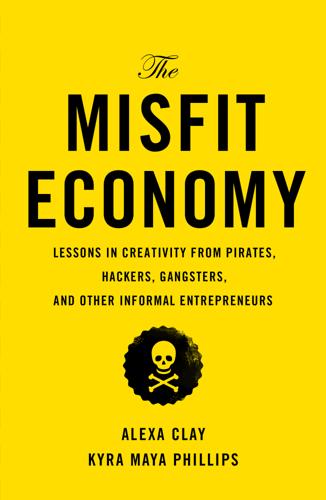
The Misfit Economy: Lessons in Creativity From Pirates, Hackers, Gangsters and Other Informal Entrepreneurs
by
Alexa Clay
and
Kyra Maya Phillips
Published 23 Jun 2015
They felt that the itch to invent was inborn. In a nod to collective innovation, they didn’t feel that any one inventor could or should claim credit or royalties when “there is no need to reward him who might be lucky enough to be the first to hit on the thing required.”20 Arriving at the invention of the steam engine or the cotton gin was attributed to right time, right place. If you hadn’t done it, well, someone else would have. You just got there first. It seems, then, that the patent system has always been an instrument of extraction, a collusion between the wealthy and their government. Historian Adrian Johns notes in his book Piracy: The Intellectual Property Wars from Gutenberg to Gates that these same anti-patent Englishmen felt that lower-class inventors were “hopeless in the face of big capital” due to the cost of patent fees, which in 1860 ranged from £100 to £120 (around $585), or approximately four times per capita income.

Riding for Deliveroo: Resistance in the New Economy
by
Callum Cant
Published 11 Nov 2019
Workers deserve things like gig tickets, nights out, weekends away, and the rest – but for many, the reality is that it’s all a pipe dream. The best you can afford when you are underemployed on minimum wage is sitting on a sofa drinking cans. We’re in the worst decade for real wages since the 1790s and the invention of the steam engine. Across the economy, workers are earning less in real terms than they did before the crisis of 2008. Deliveroo workers are just experiencing the particularly sharp edge of a much bigger wedge. Deliveroo legitimates its claim that its workers are self-employed partly through this fiction that their workers are equal business partners with them.

The Third Pillar: How Markets and the State Leave the Community Behind
by
Raghuram Rajan
Published 26 Feb 2019
The market is no longer seen as fair because it excludes many who want to participate and does not help those who simply cannot. Since the invention of the steam engine, there have been a number of episodes of massive technological change, when vast sections of the population of developed countries have had to upgrade their skills and move to new unfamiliar industries or geographic locales. Economic historians differ on which episodes they think important, but many would agree on three. The First Industrial Revolution, starting with the invention of the steam engine and followed by the development of railroads and steamships, played out between 1775 and 1875 approximately.
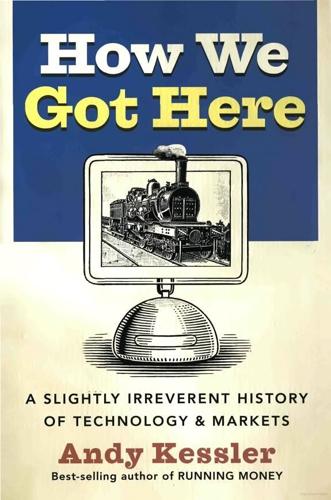
How We Got Here: A Slightly Irreverent History of Technology and Markets
by
Andy Kessler
Published 13 Jun 2005
. *** Simple arithmetic and patterns for looms are one thing, but if mathematicians wanted to do anything more, they did it by hand. The Holy Grail for scientists at the time was to solve differential equations. Astronomers who studied the skies needed differential equations to predict orbits. The invention of the steam engine would have gone a lot faster if James Watt had been able to solve differentials in Isaac Newton’s law of cooling. Newton stated that if an object, hot or cold, is in an area of constant temperature, then its rate of temperature change is proportional to the difference between the object’s temperature and the ambient temperature.

Four Thousand Weeks: Time Management for Mortals
by
Oliver Burkeman
Published 9 Aug 2021
Making time standardized and visible in this fashion inevitably encourages people to think of it as an abstract thing with an independent existence, distinct from the specific activities on which one might spend it; “time” is what ticks away as the hands move around the clockface. The Industrial Revolution is usually attributed to the invention of the steam engine; but as Mumford shows in his 1934 magnum opus, Technics and Civilization, it also probably couldn’t have happened without the clock. By the late 1700s, rural peasants were streaming into English cities, taking jobs in mills and factories, each of which required the coordination of hundreds of people, working fixed hours, often six days a week, to keep the machines running.

Deep Time Reckoning: How Future Thinking Can Help Earth Now
by
Vincent Ialenti
Published 22 Sep 2020
But paleontologist Jan Zalasiewicz, the chair of the Anthropocene Working Group, has said the question was less about detecting human influence in rock strata; for him, it was about revealing a fundamental, human-induced change in the Earth system.21 The Anthropocene idea, however unofficial, has already sparked lively scientific debates. Like Safety Case research, it can stretch our minds across time. One question is when it should be decided to have begun. Crutzen originally suggested the Anthropocene began in 1784 with the invention of the steam engine, which set into motion centuries of widespread fossil fuel addiction. In 2011, however, he and his colleagues proposed 1800 as a more logical start date. That is about when the Industrial Revolution became entrenched in Great Britain and elsewhere.22 Other start date proposals look to the Great Acceleration: the post–World War II explosion of automobiles, synthetic nitrate fertilizers, airplanes, population booms, international tourism, carbon emissions, nuclear arms race, leaded and concrete petroleum, plastics, global telecommunications, national GDPs, urbanization, energy use, water use, paper production, and so on.
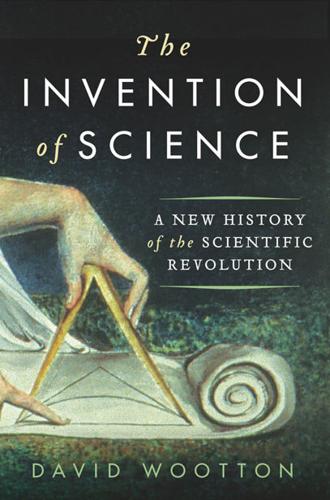
The Invention of Science: A New History of the Scientific Revolution
by
David Wootton
Published 7 Dec 2015
It is this sort of revolution, a revolution of unintended consequences and unforeseen outcomes, that Butterfield intended to evoke by the term ‘the Scientific Revolution’. If we define the term ‘revolution’ narrowly as an abrupt transformation that affects everybody at the same time, there is no Scientific Revolution – and no Neolithic Revolution, or Military Revolution (following the invention of gunpowder), or Industrial Revolution (following the invention of the steam engine) either. But we need to acknowledge the existence of extended, patchy revolutions if we want to turn aside from politics and understand large-scale economic, social, intellectual and technological change. Who, for example, would object to the term ‘the digital revolution’ on the grounds that it is not a singular and discrete event, localized in time and space?
…
Thomas Kuhn thought that science and technology were antithetical to each other, at least until the 1870s.9 One might think that the historians of technology would have wanted to question this disjuncture between theory and practice – but at first they were the same people as the historians of science.10 The major attack on the established orthodoxy has come only very recently, and from an unexpected quarter: the new economic historians of the Industrial Revolution, who emphasize the importance of skills and technical innovation, of what they call ‘the knowledge economy’.11 On this question the new economic historians are (as will become apparent) in the right. But those who argue that science played a key role in the Industrial Revolution need to have an answer to a simple and by now classic question: What role did science play in the invention of the steam engine? Before tackling this problem, however, we need to unpack the apparently straightforward notion of practical knowledge. The key issue here is one of timescale: How long should one wait before dismissing a theoretical achievement or a technological advance as having little or no practical relevance?
…
Thus the basic technology of the steam engine’s piston is laid out because that technology overlaps with the technology of the air pump – it is precisely because of these overlaps that Papin could go on three years later to build the first steam engine.vii Papin’s 1687 air pump, from A Continuation of the New Digester. But the Continuation does more than that. It provides the reader with the line of thinking that led Papin to the invention of the steam engine. Here is what he says: I might also reckon among the uses of this Engine [the air-pump] the strength it can afford to produce great effects without the encumbrance of great weights: For a tube very even and well workt may be made very light and yet being emptyed of Air it will endure the pressure of the Atmosphere: Nevertheless a plug very exact at one end of that tube would be pressed towards the other with a very great strength, at least if the tube was of a pretty great Diameter: for example if it was a foot Diameter the plug would be press’t with the strength of about 1800 pounds.
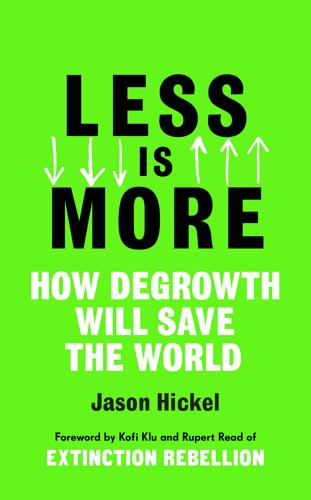
Less Is More: How Degrowth Will Save the World
by
Jason Hickel
Published 12 Aug 2020
Two Rise of the Juggernaut Capitalism can no more be ‘persuaded’ to limit growth than a human being can be ‘persuaded’ to stop breathing. Murray Bookchin I still remember when I first learned about the history of capitalism in school. It was a happy story that started with the invention of the steam engine in the eighteenth century and worked its way through a parade of technological innovations, from the flying shuttle all the way up to the personal computer. I remember marvelling at the glossy pictures in the textbook. As this story would have it, economic growth is like a fountain of money that springs forth from technology itself.
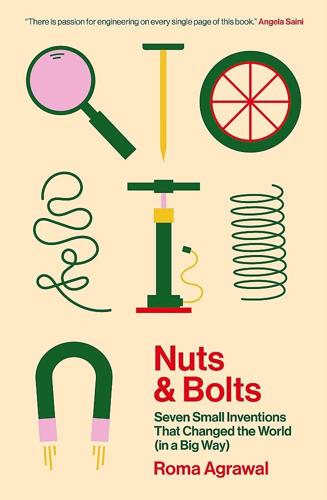
Nuts and Bolts: Seven Small Inventions That Changed the World (In a Big Way)
by
Roma Agrawal
Published 2 Mar 2023
The crankshaft, a machine that converts rotational motion into linear motion, is a central feature of fuel-powered vehicles today, and attributed to al-Jazari. The device has a main arm with a series of straight rods coming off it perpendicularly. When the main arm is rotated, because of its ‘cranked’ shape, it pulls the rods back and forth in a line compressing gas or fuel. This technology was central to the invention of the steam engine and car engine; without it, our world wouldn’t look the same. Our need for and dependence on water has meant that a lot of pump development has been focused on moving it. In around the seventeenth century, engineers turned their minds to other liquids and other uses for pumps. As industrialisation increased in the nineteenth and twentieth centuries, pump design developed rapidly, and pumps were used in a broad range of applications.
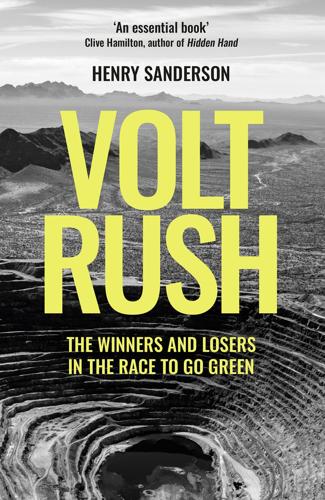
Volt Rush: The Winners and Losers in the Race to Go Green
by
Henry Sanderson
Published 12 Sep 2022
Zeng was keenly aware of the importance to China of having a strong battery and car industry. New technologies were closely connected to national power and strength, he said. Before the nineteenth century China had been a leader in the global economy thanks to ironware and the ‘four great inventions’: papermaking, printing, gunpowder and the compass. But the invention of the steam engine in the eighteenth century had caused the UK to become a global factory and China to ‘miss an opportunity, and to decline from a peak’.28 Nevertheless, in his view, over the last forty years China had made some advancements in certain areas such as 5G technology. The current global economy was focused on renewable energy, electric cars, biotechnology and artificial intelligence, he said.

Early Retirement Extreme
by
Jacob Lund Fisker
Published 30 Sep 2010
Keep in mind that one species may be dependent on other species or live together with other species in communities. A community is known as a seral stage. Seral stages merge gradually into each other until they reach the climax stage. The climax stage is stable, but may change due to external or internal disruptive events (lava flows, the invention of the steam engine). Ergodicity and destiny It is possible to change "species." Regardless of the initial state or large bumps along the way, people gravitate toward the outcomes their behavior induces. As "species" have different types of behavior, one must change behavior to change species. There's no faking it, nor is there any "buying" it.
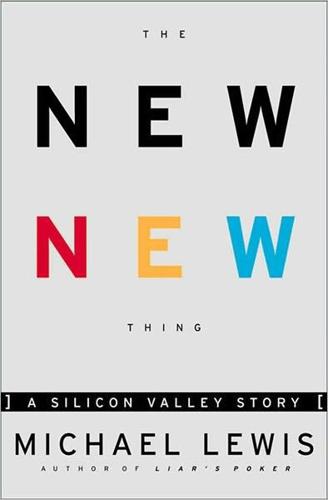
The New New Thing: A Silicon Valley Story
by
Michael Lewis
Published 29 Sep 1999
That is, the force on its ropes was the equivalent of dangling from their ends an eleven ton steel block. Already the ropes were being tested. "The wind is too strong to let it all out," Allan shouted to Wolter. Wolter nodded solemnly. Not until you have hoisted a sail and turned off the engine can you fully appreciate the euphoria that accompanied the invention of the steam engine. The boat, now engineless, was subjected to a grosser, more primal force. The waves crashed and the spray came in sheets and the partial corkscrewing motion became a full corkscrewing motion. The eight men in Puker's Alley retched all over again. This time it wasn't so funny to the others.
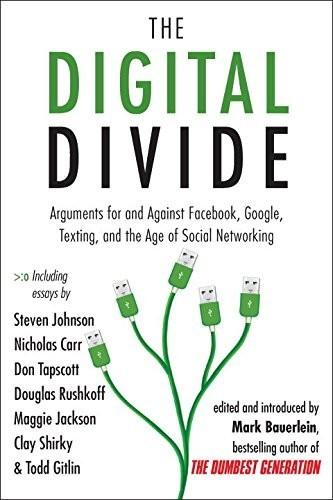
The Digital Divide: Arguments for and Against Facebook, Google, Texting, and the Age of Social Netwo Rking
by
Mark Bauerlein
Published 7 Sep 2011
By breaking down every job into a sequence of small, discrete steps and then testing different ways of performing each one, Taylor created a set of precise instructions—an “algorithm,” we might say today—for how each worker should work. Midvale’s employees grumbled about the strict new regime, claiming that it turned them into little more than automatons, but the factory’s productivity soared. More than a hundred years after the invention of the steam engine, the Industrial Revolution had at last found its philosophy and its philosopher. Taylor’s tight industrial choreography—his “system,” as he liked to call it—was embraced by manufacturers throughout the country and, in time, around the world. Seeking maximum speed, maximum efficiency, and maximum output, factory owners used time-and-motion studies to organize their work and configure the jobs of their workers.

The Corruption of Capitalism: Why Rentiers Thrive and Work Does Not Pay
by
Guy Standing
Published 13 Jul 2016
Meanwhile, data from the European Patent Office analysed by the OECD in 2015 suggest that the average technological and economic value of patented inventions has been falling, probably reflecting growing defensive filings.8 Privatising innovation can actually impede scientific advance by making it harder for inventors to build on the inventions of others and by stifling the exchange of ideas. James Watt’s patent to protect his invention of the steam engine prevented further development of the technology until after his patent expired.9 Had César Milstein applied for a patent for his creation of monoclonal antibodies, many advances in cancer treatment would have been delayed.10 The decision of Tim Berners-Lee and CERN (the European Organization for Nuclear Research), where he worked, not to patent his 1989 invention of the World Wide Web paved the way for an explosion in information and communication technologies.

Halting State
by
Charles Stross
Published 9 Jul 2011
MacDonald’s house, which turned out to be a top-floor flat in Bruntsfield, just off the Links. Which would have made for a nice side trip, but by the time you’d found somewhere to park and then climbed four flights of stone steps—like most of Edinburgh, the tenement he’d chosen to live in predated the invention of the steam engine, never mind lifts—you were deeply unamused to find yourself facing a locked oak door with a discreetly reinforced frame and an unanswered doorbell. Standing on the wicker door-mat, you speculated for a few moments: Maybe the sly bugger’s legged it to Dubai to spend his ill-gotten gains?

Utopia Is Creepy: And Other Provocations
by
Nicholas Carr
Published 5 Sep 2016
By breaking down every job into a sequence of small, discrete steps and then testing different ways of performing each one, Taylor created a set of precise instructions—an “algorithm,” we might say today—for how each worker should work. Midvale’s employees grumbled about the strict new regime, claiming that it turned them into little more than automatons, but the factory’s productivity soared. More than a hundred years after the invention of the steam engine, the industrial revolution had at last found its philosophy and its philosopher. Taylor’s tight industrial choreography—his “system,” as he liked to call it—was embraced by manufacturers throughout the country and, in time, around the world. Seeking maximum speed, maximum efficiency, and maximum output, factory owners used time-and-motion studies to organize their work and configure the jobs of their workers.

The Future of Fusion Energy
by
Jason Parisi
and
Justin Ball
Published 18 Dec 2018
Windmills and waterwheels captured the flows of wind and water to process grains and irrigate fields, while the sails of ships enhanced human transportation and exploration. Still, for the most part, we relied on animals and burning plants to enable human survival. This reliance on animals began to change substantially with the invention of the steam engine. The steam engine has a rich and complex history, but here it suffices to say that it became commercially available in the early 18th century. The steam engine was the first device capable of transforming the heat energy from fire into useful mechanical work (see Figure 1.1). While it was initially limited to pumping water out of coal mines, it would eventually power the Industrial Revolution.

In Our Own Image: Savior or Destroyer? The History and Future of Artificial Intelligence
by
George Zarkadakis
Published 7 Mar 2016
We are nowadays the denizens of a digital noosphere: creators, consumers and manipulators of vast amounts of digital data. The deluge of big data that comes from the digitisation of almost everything, and the value for businesses and governments that these data encapsulate, are taking the world economy into a new era increasingly called ‘the second machine age’.1 The ‘first age’ occurred when the invention of the steam engine multiplied humanity’s capacity for manual labour. In the ‘second age’ the computer multiplies our capacity for mental labour. As computers increasingly become more ‘intelligent’, they are bound to transcend their current number-crunching duties and take over jobs traditionally associated with human, white-collar workers.

Whole Earth Discipline: An Ecopragmatist Manifesto
by
Stewart Brand
Published 15 Mar 2009
“Not only does the pace of life increase with city size,” the authors wrote, “but so also must the rate at which new major adaptations and innovations need to be introduced to sustain the city.” The paper concluded, “We have shown that growth driven by innovation implies, in principle, no limit to the size of a city, providing a quantitative argument against classical ideas in urban economics.” In other words, West told me, “Cities can go on growing forever. Look at the invention of the steam engine, the car, the digital revolution. What these advances all have in common is that they allowed cities to continue growing.” If cities are concentrators of efficiency and innovation, an article about the scaling paper in Conservation magazine surmised, then, “the secret to creating a more environmentally sustainable society is making our cities bigger.
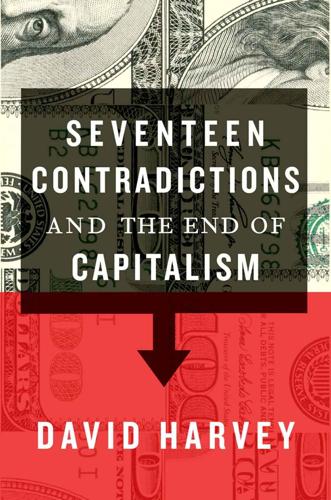
Seventeen Contradictions and the End of Capitalism
by
David Harvey
Published 3 Apr 2014
The land was needed for biofuels (charcoal in particular) and for food production, and, at a time when the capacity for international trade in energy and foodstuffs was limited, the development of capitalism in Britain threatened to grind to a halt because of intensifying competition on the land between the two uses. The answer lay in going underground to mine coal as a source of energy so the land could be used to grow food alone. Later on, the invention of the steam engine helped revolutionise what capitalism was about as fossil fuel sources became general. A contradiction can often be the ‘mother of invention’. But notice something important here: resort to fossil fuels relieved one contradiction but now, centuries later, it anchors another contradiction between fossil fuel use and climate change.

Human Frontiers: The Future of Big Ideas in an Age of Small Thinking
by
Michael Bhaskar
Published 2 Nov 2021
It laid a lasting pattern: the underlying toolset of an era is not a passive product of its science or economy, but a co-creator. As we have seen throughout history, and contrary to the popular myth that everything flows down from ivory towers, tinkerers and tools often open the spaces for new insights.18 The invention of the steam engine preceded the understanding of the laws of thermodynamics upon which it relies. Vaccination preceded the knowledge of antibodies. Pasteur was as much motivated by the practical concerns of wine growers, silk makers and the sick as by the imperatives of pure science. Films require a camera, the computer game a computer.

Common Wealth: Economics for a Crowded Planet
by
Jeffrey Sachs
Published 1 Jan 2008
In the twentieth century, availability of hydrocarbons was generally a great advantage. There are a host of qualifiers to this rule, however. First, the usefulness of a particular energy resource depends on the technology that is available. Coal made only a modest difference before the invention of the steam engine. Most water power could not be usefully tapped before the invention of the elec-trodynamo, by which falling water can be converted into electricity. Oil became valuable with the invention of the internal combustion engine. Perhaps in the twenty-first century, sunshine will become the resource of choice as solar power is more effectively harnessed.

Plutocrats: The Rise of the New Global Super-Rich and the Fall of Everyone Else
by
Chrystia Freeland
Published 11 Oct 2012
A second set of revolutions is in technology. New technologies, especially computers and the Internet, then mobile and wireless, are disrupting existing businesses and opening up the chance to create new ones. Like the industrial revolution, which started with mechanization of the textile industry, then the invention of the steam engine, followed by the combustion engine and electricity, the technology revolution isn’t a single discovery; it is wave after wave of related transformations. In 2012, the hot new areas were big data—our ability to collect and analyze massive amounts of information—and machines talking to machines, creating what W.
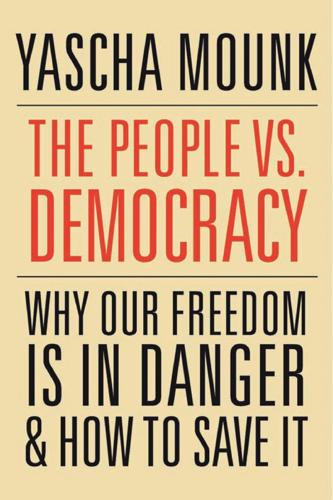
The People vs. Democracy: Why Our Freedom Is in Danger and How to Save It
by
Yascha Mounk
Published 15 Feb 2018
“Whoever is winning at the moment,” George Orwell once wrote, “will always seem to be invincible.”29 But once populists capture the government and start to break many of their promises, they may be rudely reminded of social media’s potential to empower the new outsiders against their rule. 5 Economic Stagnation ECONOMICALLY SPEAKING, the last three hundred years are an aberration. For most of history, there has barely been any economic growth. In the thousands of years between the foundation of Athens and the invention of the steam engine, average annual growth remained at a modest 0.1 percent. And much of that growth was due to an increase in the overall population rather than an increase in the living standards of the average household.1 Because growth was so slow, economic progress rarely took place at the scale of an individual lifespan.
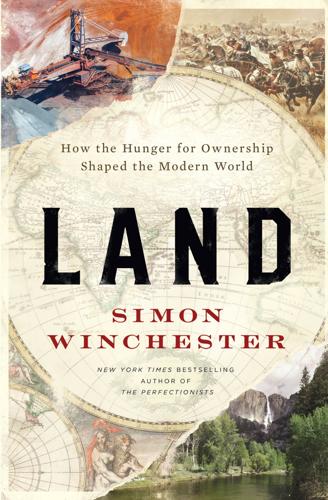
Land: How the Hunger for Ownership Shaped the Modern World
by
Simon Winchester
Published 19 Jan 2021
The Dutch national philosophy is related to the polder system—unarguably making the Netherlands the only nation on earth with its guiding principles based on the theory and practice of the making of land. Nature, of course, didn’t always allow the polders to enjoy a sense of permanence—even though James Watt’s late-eighteenth-century invention of the steam engine allowed for the construction of a large number of pumping stations, far more efficient and effective than the windmills and the Archimedes’-screw lifting systems that had been used before. But huge storms and their attendant floods more than occasionally reversed all of even this great progress, and most Dutch people today know all too well the dates of the worst of them—this being a country of long water-related memories.
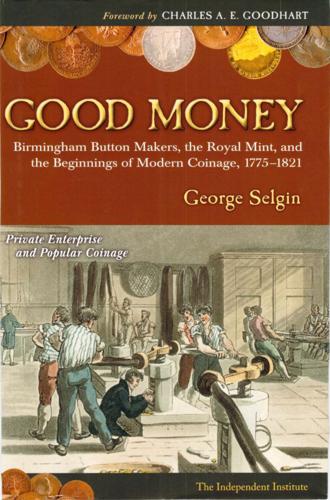
Good Money: Birmingham Button Makers, the Royal Mint, and the Beginnings of Modern Coinage, 1775-1821
by
George Anthony Selgin
Published 13 Jul 2008
The prestigious society's dozen members included, among others, Joseph Banks, Erasmus Darwin, and Joseph Priestley. In 1773, Boulton led Birmingham's successful campaign to have its own assay office and hallmark. Finally, had it not been for Boulton, Watt himself might never have become a household name. A statue in today's Birmingham commemorating the invention of the steam engine quite properly joins Boulton with Watt and Soho employee William Murdock (who played a crucial part in perfecting Watt's engine), for had it not been for Boulton's keen lobbying skills, Watt would never have obtained the twenty-five-year extension of his separate condenser patent 62 GOOD MONEY that ultimately clinched his fame, to the point of causing him to be mistakenly identified, outside Birmingham at least, as the "inventor" of the steam engine.
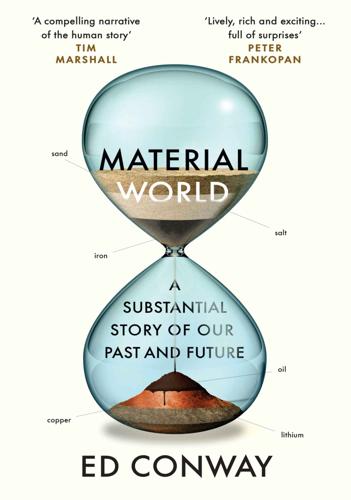
Material World: A Substantial Story of Our Past and Future
by
Ed Conway
Published 15 Jun 2023
And since coal was far more energy-dense a fuel than wood, not to mention far more abundant, Britain’s iron production suddenly rocketed ahead, prompting a series of other innovations. The more coal and iron Britain used, the more it needed to mine, and the deeper it mined, the more work it took to pump water out of the pits. This quandary prompted the invention of the steam engine – first the primitive machines of Thomas Savery and Thomas Newcomen and then the more sophisticated engines of James Watt. All of a sudden, coal could be used not just to make chemicals, glass and iron, but to fuel a moving wheel, which could just as easily push a locomotive as pump the water out of mines.

The Technology Trap: Capital, Labor, and Power in the Age of Automation
by
Carl Benedikt Frey
Published 17 Jun 2019
When hunter-gatherers during the Ice Age first noticed residues of limestone and burned sand in their hearths, they could not possibly have foreseen how millennia of accidental discoveries would lead to the first Roman glass windows.14 Similarly, when Evangelista Torricelli discovered that the atmosphere has weight, he could not have predicted the chain of events that would culminate in the invention of the steam engine. The view that new technology creates its own demand implies that the lack of preindustrial growth was primarily a consequence of obstacles to the supply of technology. In support of a supply-driven explanation, a number of theories have pointed to different factors that are likely to have held the supply of technology back in the preindustrial era.

Nexus: A Brief History of Information Networks From the Stone Age to AI
by
Yuval Noah Harari
Published 9 Sep 2024
It encourages people to abdicate responsibility and put their faith in gods and sorcerers instead. Even worse, it fails to appreciate that gods and sorcerers are themselves a human invention—just like chariots, brooms, and algorithms. The tendency to create powerful things with unintended consequences started not with the invention of the steam engine or AI but with the invention of religion. Prophets and theologians have repeatedly summoned powerful spirits that were supposed to bring love and joy but ended up flooding the world with blood. The Phaethon myth and Goethe’s poem fail to provide useful advice because they misconstrue the way humans gain power.

Thank You for Being Late: An Optimist's Guide to Thriving in the Age of Accelerations
by
Thomas L. Friedman
Published 22 Nov 2016
A crucial impetus was a book I read in 2014 by two MIT business school professors—Erik Brynjolfsson and Andrew McAfee—entitled The Second Machine Age: Work, Progress, and Prosperity in a Time of Brilliant Technologies. The first machine age, they argued, was the Industrial Revolution, which accompanied the invention of the steam engine in the 1700s. This period was “all about power systems to augment human muscle,” explained McAfee in an interview, “and each successive invention in that age delivered more and more power. But they all required humans to make decisions about them.” Therefore, the inventions of that era actually made human control and labor “more valuable and important.”

Firepower: How Weapons Shaped Warfare
by
Paul Lockhart
Published 15 Mar 2021
Steam power made armored and iron-hulled ships possible; the shell gun made them necessary. But steam power came first, and its potential for travel by water was tested before it was first successfully applied to land-based locomotion. That realization—that the steam engine could be applied to water transportation—came right on the heels of the invention of the steam engine itself. Thomas Newcomen patented his “atmospheric engine,” designed to pump water out of flooded subterranean mines, around 1712; the first patents for steamboats that used the Newcomen engine as a means of propulsion were issued in the 1720s. A Newcomen engine powered the first working steamboat, Claude de Jouffroy’s Pyroscaphe, when it made its maiden voyage on the Saône River in France in 1783.

Slouching Towards Utopia: An Economic History of the Twentieth Century
by
J. Bradford Delong
Published 6 Apr 2020
It was a process that required inventors to be not just researchers but development engineers, maintenance technicians, human resource managers, bosses, cheerleaders, marketers, impresarios, and financiers as well. That pre-1870 system was good enough as long as the confluence of circumstances was just right. Consider the invention of the steam engine in the eighteenth century. It needed a cheap source of fuel, it needed something important and profitable to do, and it needed societal competence at the metalworking technological frontier. Fuel was found at the bottom of the coal mines. With the steam engine, cheap, plantation-grown cotton, ideally suited for machine spinning, quickly reached factories that produced sought-after goods.

Money Changes Everything: How Finance Made Civilization Possible
by
William N. Goetzmann
Published 11 Apr 2016
As will be discussed in Part III, the process to develop a system that rewards investment was a long and complex one and it took place principally in Europe. The most telling evidence is that the differential in financial development between China and the West preceded the differences in technological advancement. European financial markets did not suddenly spring up with the invention of the steam engine and the mechanization of manufacturing processes. By the time of the Industrial Revolution in Europe, commercial banks and organized securities exchanges had existed for at least two centuries. When nineteenth-century railway companies wanted to raise capital to lay track and build cars, they had access to a pre-existing widespread class of investors who were accustomed to paying good money for future promised cash flows—there was a demand for investment opportunity and the structural know-how to create products that met this demand.

The Rise of the Network Society
by
Manuel Castells
Published 31 Aug 1996
A last and essential lesson from the industrial revolutions that I consider relevant to this analysis is controversial: although they both brought a whole array of new technologies that actually formed and transformed an industrial system in successive stages, at their core there was fundamental innovation in the generation and distribution of energy. R. J. Forbes, a classic historian of technology, affirms that “the invention of the steam engine is the central fact in the industrial revolution,” followed by the introduction of new prime movers and by the mobile prime mover, under which “the power of the steam-engine could be created where needed and to the extent desired.”35 And although Mokyr insists on the multifaceted character of the industrial revolution, he also thinks that “the protestations of some economic historians notwithstanding, the steam engine is still widely regarded as the quintessential invention of the industrial revolution.”36 Electricity was the central force of the second revolution, in spite of other extraordinary developments in chemicals, steel, the internal combustion engine, telegraphy and telephony.

Wired for War: The Robotics Revolution and Conflict in the 21st Century
by
P. W. Singer
Published 1 Jan 2010
Many seemingly important changes can occur (and distract) before the truly revolutionary part becomes clear. In turn, most revolutions don’t actually grow from one single invention, but from a convergence of technologies. For example, the Industrial Revolution that transformed society and then war in the nineteenth and early twentieth centuries actually kicked off with the invention of the steam engine back in 1782. But the steam engine had to be brought together with everything from railroads to telegraphs for it to culminate as the industrial RMA that shaped World War I. A good person to explain is actually another of the major thinkers behind the RMA movement inside the Pentagon, Andrew Marshall.
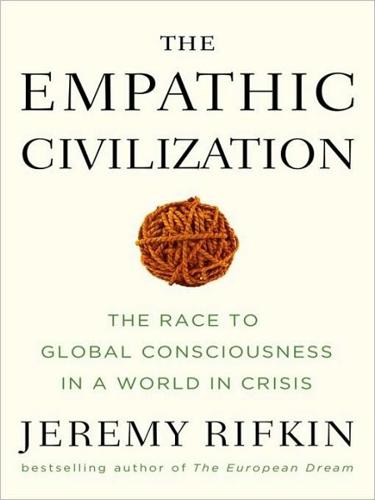
The Empathic Civilization: The Race to Global Consciousness in a World in Crisis
by
Jeremy Rifkin
Published 31 Dec 2009
The Great Schism of Christianity, beginning with the Reformation and followed by the Counter-Reformation, the Thirty Years’ War, and the Peace of Westphalia—which helped establish the modern notion of national sovereignty—changed the social and political face of Europe.47 But the full economic impact of the print revolution had to await the invention of the steam engine by James Watt in 1769.48 The print revolution converged with the coal, steam, and rail revolution to create the First Industrial Revolution. Between 1830 and 1890, in both Europe and North America, print communications underwent a revolution. Efficient steam-powered print presses made the print production process both quick and cheap.49 Public schooling and mass literacy were introduced on both continents, and within two generations produced the first nearly fully literate populations in history.

This Changes Everything: Capitalism vs. The Climate
by
Naomi Klein
Published 15 Sep 2014
Steam engines also worked anywhere, regardless of the geography, which meant that factory owners could shift production from more remote areas to cities like London, Manchester, and Lancaster, where there were gluts of willing industrial workers, making it far easier to fire troublemakers and put down strikes. As an 1832 article written by a British economist explained, “The invention of the steam-engine has relieved us from the necessity of building factories in inconvenient situations merely for the sake of a waterfall.” Or as one of Watt’s early biographers put it, the generation of power “will no longer depend, as heretofore, on the most inconstant of natural causes—on atmospheric influences.”27 Similarly, when Watt’s engine was installed in a boat, ship crews were liberated from having to adapt their journeys to the winds, a development that rapidly accelerated the colonial project and the ability of European powers to easily annex countries in distant lands.
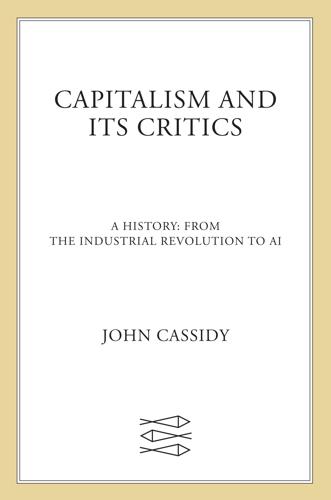
Capitalism and Its Critics: A History: From the Industrial Revolution to AI
by
John Cassidy
Published 12 May 2025
Now it was “a country like no other … with vast manufacturing cities; with an industry that supplies the world, and produces almost everything by means of the most complex machinery.”24 In 1834, England exported “556,000,000 yards of woven cotton goods, 76,500,000 pounds of cotton yarn.”25 But even as scientific progress and industrialization had given a huge boost to England’s economic development, it had divided its society into two antagonistic groups: the bourgeoisie, which owned the means of production, and the propertyless proletariat. “The history of the proletariat in England begins with the second-half of the last century, with the invention of the steam engine and of machinery for working cotton,”26 Engels stated flatly. In order to survive, the factory worker had no option but to sell his labor. “Left to himself he cannot survive a single day. The bourgeoisie has gained a monopoly of all means of existence in the broadest sense of the word.”27 None of this would have come as news to William Thompson or other early socialists, of course.

The Dawn of Everything: A New History of Humanity
by
David Graeber
and
David Wengrow
Published 18 Oct 2021
Ritual creates a world which is marked off as standing apart from ordinary life, but is also where essentially imaginary, ongoing institutions (like clans, empires, etc.) exist and are maintained. 55. As Peter Burke (2009: 283–5) notes, the idea that rituals of rebellion were simply ‘safety valves’ or ways of allowing common folk to ‘let off steam’ is first documented only two years after the invention of the steam engine – the favoured metaphor before that had been to let off the pressure in a wine cask. At the same time, though, medieval authorities were keenly aware of the fact that most peasant revolts or urban insurrections would begin precisely during such ritual moments. This ambivalence appears again and again.
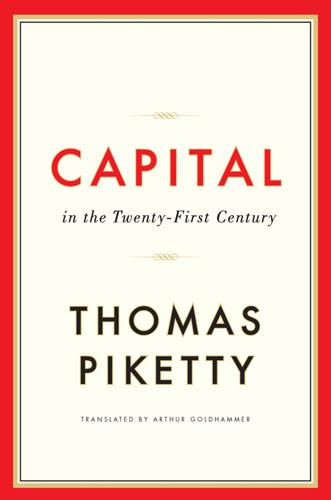
Capital in the Twenty-First Century
by
Thomas Piketty
Published 10 Mar 2014
Some economists, such as Robert Gordon, believe that the rate of growth of per capita output is destined to slow in the most advanced countries, starting with the United States, and may sink below 0.5 percent per year between 2050 and 2100.22 Gordon’s analysis is based on a comparison of the various waves of innovation that have succeeded one another since the invention of the steam engine and introduction of electricity, and on the finding that the most recent waves—including the revolution in information technology—have a much lower growth potential than earlier waves, because they are less disruptive to modes of production and do less to improve productivity across the economy.

Andrew Carnegie
by
David Nasaw
Published 15 Nov 2007
I am in love with my hero and enjoy leisurely penning a few paragraphs of the book.” His full-length biography, well researched and written with his usual fluency, was published the following May to good reviews. The book was an old-fashioned hagiography, with a quite lucid description of the science that had gone into the invention of the steam engine. Much of it was composed of long passages imported wholesale from other writers, but such was the style of the day. Richard Gilder asked if he might have permission to serialize the biography in the Century.29 The stone lodge at Auchinduich, though off the beaten path, was close enough to Skibo for Carnegie to get mail and newspapers.